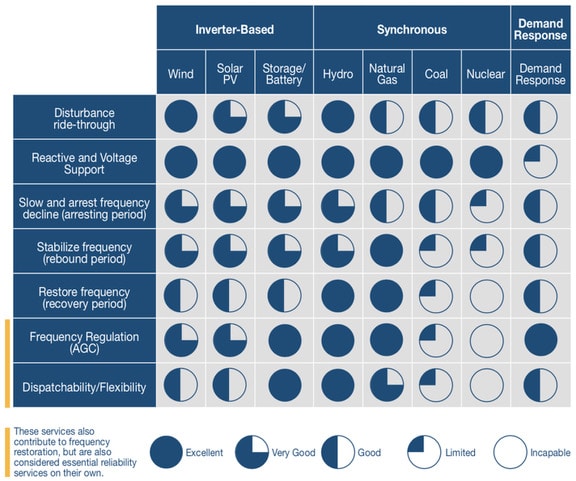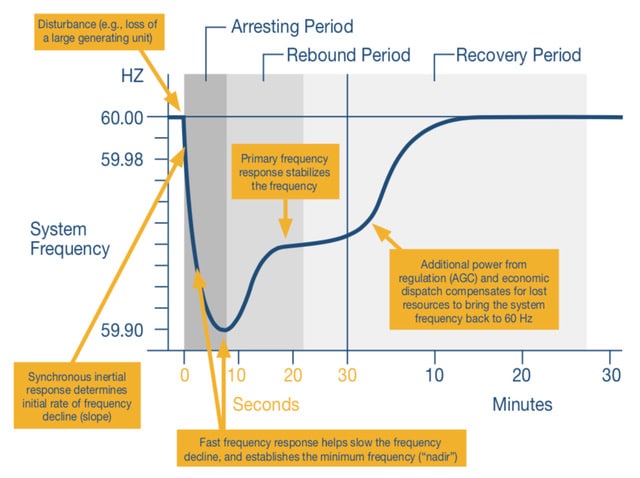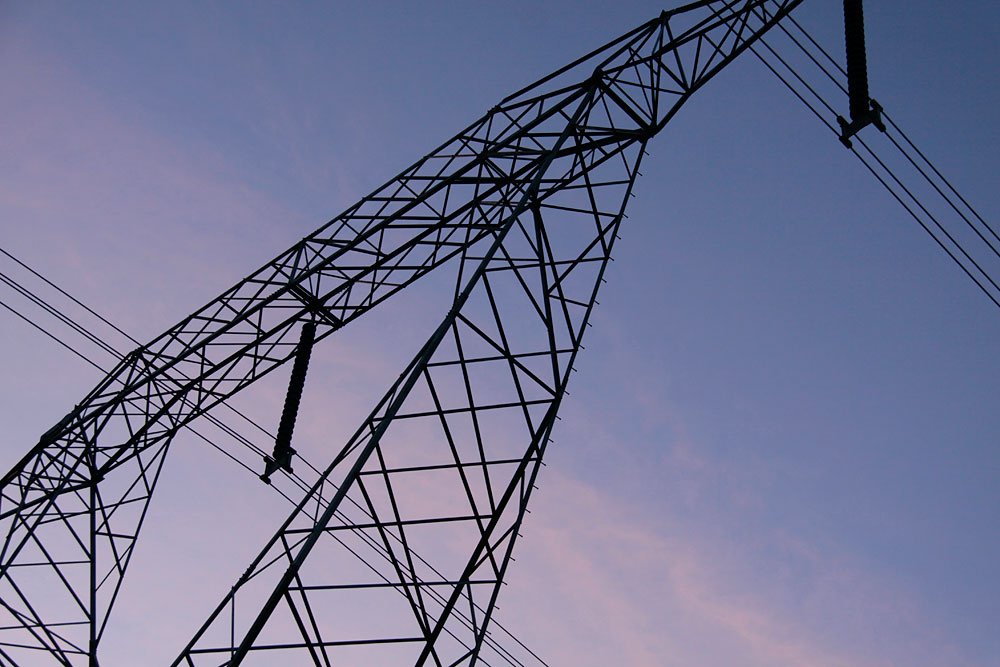From pv magazine USA.
Solar, wind and storage can provide all seven of a set of “essential” grid reliability services at a level ranging from good to excellent, according to grid consultant and researcher Michael Milligan, due to the capabilities of their inverters.

The table above, which synthesizes previous research, features grid services considered essential to restoring grid frequency after a generating unit outage or other disruption. Milligan, who examines renewables’ capability in a paper in The Electricity Journal, presented his findings at the policy conference of the National Association of Regulatory Utility Commissioners.
Grid operators can call on distributed as well as utility-scale solar, if small generators can respond to signals from a utility or aggregator – a practice that could be facilitated by a recently issued standard communications profile.
Milligan defined his seven essential grid services primarily using a concept paper prepared by the Electric Reliability Services Task Force of the North American Electric Reliability Corporation (NERC).
Milligan’s study builds on prior research into the grid services solar can provide. That body of work included a study by First Solar, the National Renewable Energy Laboratory (NREL) and the California Independent System Operator (CAISO) that demonstrated solar’s capabilities in frequency control, voltage regulation and ramping capabilities; a study sponsored by First Solar and conducted by E3 that concluded operating solar in full flexibility mode enabled a higher level of cost-saving solar on the grid; and a NERC report showing frequency response improved with more solar and wind on the grid.
Inverters hold the key
Milligan explains in his article, inverters form the basis of the grid capabilities of solar, wind and storage, and writes: “Because the power electronics devices that couple DC to AC power offer very fast response, it is now possible to use software to control how the resource interacts with the power system, subject to physical constraints.”
To provide grid services, the article notes solar, wind and storage must also “be in an appropriate operating state to provide services when needed” – for instance, solar must be “pre-curtailed” to provide ramping support – and must “have an economic incentive, and/or no economic disincentive, to provide the service”.
In other words, economic incentives are essential at this stage – regulators must provide appropriate incentives to enable participation by all technology types. That process has already begun. Milligan notes CAISO has adopted ramping as a market-based product while its counterpart Midcontinent ISO is developing a ramp capability product. He adds: “Any resource that is capable of providing a grid service should not be prevented by reliability rules or market rules from doing so.”
The author, who launched his consulting firm after retiring as a principal researcher at the NREL, said he wrote the article because: “There is no widespread understanding of the grid services that can be provided by alternative resource types. In some cases, there were unfounded claims that traditional resources could provide all of the required ERS [essential reliability services] and that new resources cannot.”
Milligan provided a graph showing how four of the grid services related to frequency work in sequence to restore grid frequency after network disruption. As the graph shows, “fast frequency response” kicks in during the initial seconds, slowing the rate of frequency decline and establishing a low point. Within around 20 seconds, “primary response” stabilizes the frequency. Additional power then comes online over the following minutes to restore normal frequency.

This content is protected by copyright and may not be reused. If you want to cooperate with us and would like to reuse some of our content, please contact: editors@pv-magazine.com.



Interesting, that the entire “first response” takes around 30 seconds, then the final “smoothing” of the grid is over 30 minutes, time to fire up “spinning reserve” or natural gas fired Peaker plants. The TESLA energy storage system installed across the Neoen wind farm in Australia has proven this scenario more than once since it was put online almost a year and a half ago.
Energy storage is generation neutral, with the distribution of storage along the grid infrastructure one can address large outages such as a generation plant, that one would have to “black start” after a fault. You don’t necessarily need a generation facility running in “spinning reserve” 24/7 in case the demand on the grid increases and requires more generation online. It would be nice to have distributed 1GW energy storage facilities constructed along the grid infrastructure. The more energy storage available, the more dispatchable energy from intermittent generation resources becomes. Nuclear plants are best used as baseload generation, but have a sweet spot in the 80% to 95% full service generation profile that keeps the plant’s efficiency and revenues up for operational amortization. Energy storage during off peak hours, like from 1 AM to 5 AM each day. This allows the grid to “store” and shift power demand to the morning wakeup peak, then the sundown off work peak. The so called alternative energy “duck curve” could be handled by distributed energy storage. When one gets to a community and the main line goes into the local switching station, one could construct a few MW of energy storage that could actually “island” a community supplying power when the grid trips.